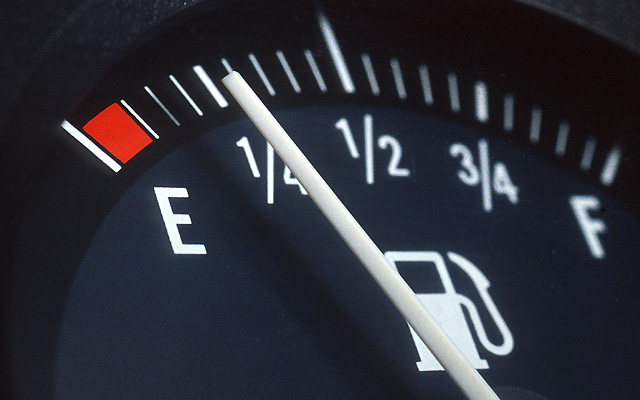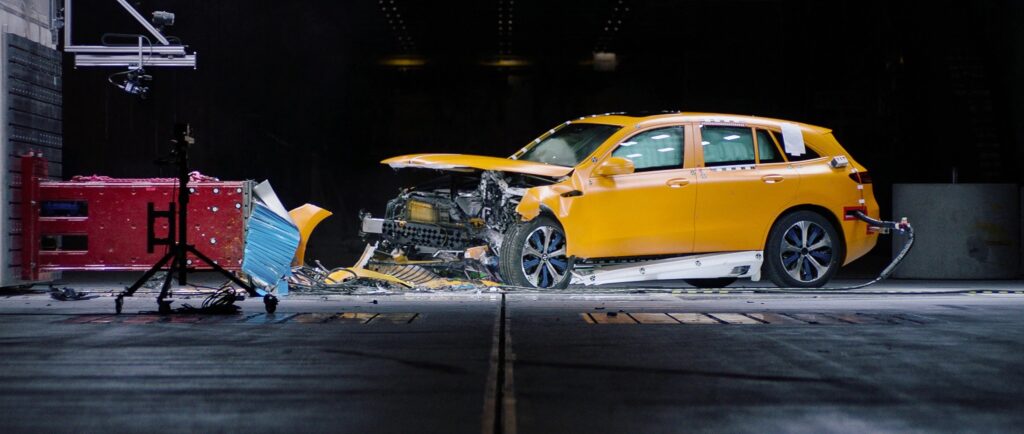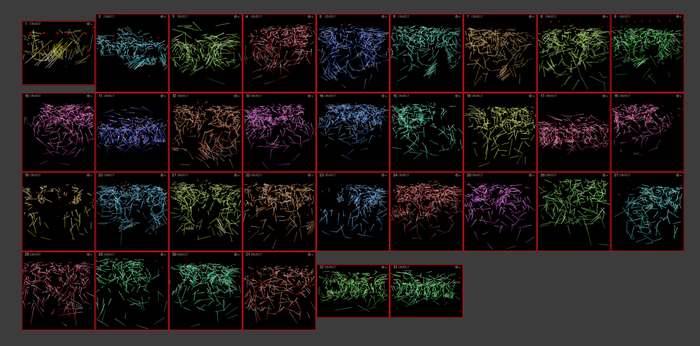The Vehicle Experience consists of a lot of different elements and each of these elements can be evaluated individually. Testing all elements of the vehicle experience is one of the most important steps during the development process of new cars. Vehicles can be evaluated objectively with standardized methods, driving maneuvers, and sensors or subjectively with the development team, external partners, or real users. With the rise of new technologies, the testing of the vehicle experience also gets more complex and complicated. There are a lot of companies out there that are specializing in testing specific features. Especially the ADAS, autonomous driving features, and other safety-relevant elements are tested meticulously during the development.
A lot of companies and public figures are also doing comprehensive tests of vehicles for their websites, blogs, magazines, YouTube channels, Instagram accounts, and many more. There are a lot of different resources where customers can get a lot of information about the cars they are interested in before actually visiting the dealership.
Examples for popular formats include Car & Driver, Evo, Motor Trend, Auto Motor und Sport, Motor1, Top Gear, Grip, carwow, and many more. Since a lot of modern vehicles also have a lot of techs inside, more and more technology-focused YouTubers and Influencers are also making comprehensive reviews of new cars. Because all of these formats also have a different target audience, they also test different features of the car in more detail. While most of these formats are also offering at least parts of their tests and videos for free on multiple channels, some still require subscriptions for more detailed information.
Car and Driver – Comprehensive Car Testing
Car and Driver Magazine has published a detailed overview of how they collect more than 200 data points for every single test they are doing. Since they are using the same procedure for every of the about 400 vehicles they are testing per year, the test results can also be compared with each other. Car and Driver are testing all cars in the following categories.
Performance Testing
To get a good overview of the performance, every car has to do different straight-line accelerations (standing quarter-mile, 5 to 60 mph rolling start, 30 to 50 mph, and 50 to 70 mph), a braking test, and a cornering test. Even though all of their data is recorded by a GPS data logger and therefore already very accurate, they are additionally accounting for wind, weather conditions, and a lot more external factors that might influence the performance of each car.

Interior Sound Level
While measuring the performance on the test track, they are also measuring the sound-pressure level in an idle state, while accelerating and while cruising. Each of the sound tests is also done on the same section of the track to ensure the best comparability possible between the tests.
Fuel Economy and Driving Range
Another important piece of information for a lot of their readers is the fuel economy or power consumption of cars. To get a realistic real-world result, they have developed their own highway fuel-economy tests for combustion engines, plug-in hybrids, and electric vehicles.

Cargo Space and Storage
Cargo space is often stated in liters by manufacturers. To get better real-world data, Car and Driver is measuring cargo volume with cardboard boxes the size of carry-on luggage and with ping-pong balls.

Visibility and Seating Height
Measuring the seating height is done with an H-point machine (HPM) that defines the theoretical location of the hip joint of the driver or passenger. With a laser that is mounted on top of this machine, they are also measuring the outward visibility and how much roadway is obscured by the car itself.

Center of Gravity Height
The center of gravity (CG) is an important value for the dynamic of the car. The lower the CG is, the better the handling in corners and the lower the risk of a rollover in really tight corners or during a crash.

Safety and Warranty
The safety of a car is determined by combining data from crash tests with some subjective evaluations of safety equipment. In the US these crash tests are performed by the National Highway Traffic Safety Administration (NHTSA) based on the US New Car Assessment Program (US NCAP) and the Insurance Institute for Highway Safety (IIHS) based on the European New Car Assessment Programme (Euro NCAP). The Euro NCAP is also the basis for crash tests in Europe. Since the warranty can only be tested during long-term tests, Car and Driver has to rely on the numbers from the manufacturers in this case. But since they are also doing long-term tests with cars from a lot of different manufacturers, they already got a good overview of the coverage and services offered by each of them.

Editors Observations
The results of this category are based on the editor’s observation sheet (EOS) they created. Editors are usually collecting more than 170 individual observations during exterior and interior walkarounds. This sheet contains information about the year, make, and model of the car, paint quality, USB port locations, amount of cup holder, material quality, ergonomics, the usability of the infotainment system, and many more.
Infotainment
Since the infotainment system plays an important role in the in-vehicle experience, Car and Driver is also measuring input lag, response time, and the features that make up the infotainment system, including Apple CarPlay Android Auto.

Overall Rating
The results from all of these categories are then combined with subjective evaluations of the drivers and editors and converted on a ten-point scale. Another important factor for their overall rating is that they are evaluating cars only in comparison to the direct competitors. If they are rating the handling of an SUV, it is not compared to handling a sports car. Each test is also discussed within the team before it gets published to ensure better comparability and fairness.
More details on their testing method can be found online:
https://www.caranddriver.com/features/a32018270/how-we-test-cars/#hwteditorsobservations
Auto Motor und Sport – Elektroauto Supertest
The “Elektroauto Supertest” series from “Auto Motor und Sport” gives a really good overview on how they are testing electric vehicles and which categories are important to them.
Top Gear – Review
While Top Gear is mainly known for the TV show on BBC which is one of the most popular car shows on TV worldwide, they also post car reviews on YouTube.
Carwow – Drag Race
Carwow is mainly known for videos, where they are drag racing different cars against each other, but they (mainly Mat Watson) are also doing car reviews.
Tech YouTuber – Car Review
As already mentioned, a lot of tech YouTubers are also doing reviews of modern, mainly electric vehicles. The most popular ones are probably Marques Brownlee (MKBHD) and Unbox Therapy, but also some German YouTuber started doing car reviews with the launch of the new Mercedes EQS.
Car YouTuber – Reviews
Of course there are not only tech focused YouTube channels with a lot of videos about cars. There are far more car focused YouTube channels that make videos about different cars. Some of them are mainly focusing on the technical parts of cars and how to tune them, some are mainly focusing on showing and optimizing their own car collection, and some are mainly focusing on reviews. Popular Englisch car channels include Car Throttle, Shmee150, DougDemuro, Drivetribe and many more. The most popular German car-focused YouTube channels include JP Performance, Philipp Kaess, Auto Bild, Motor Woche, Car Maniac and many more.
Resources
Web
https://engineering.mpt.magna.com/engineering-services/vehicle-prototyping-testing/vehicle-testing/
https://www.caranddriver.com/features/amp32018270/how-we-test-cars/


























